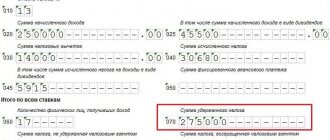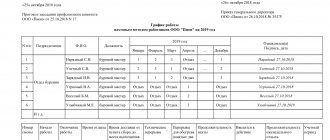Article 333.8. Taxpayers
1. Taxpayers of water tax (hereinafter in this chapter - taxpayers) are organizations and individuals engaged in special and (or) special water use in accordance with the legislation of the Russian Federation, recognized as an object of taxation in accordance with Article 333.9 of this Code.
2. Organizations and individuals who use water on the basis of water use agreements or decisions on the provision of water bodies for use, respectively, concluded and adopted after the entry into force of the Water Code of the Russian Federation, are not recognized as taxpayers.
https://youtu.be/NvBrFBC357U
Article 333.9. Objects of taxation
1. The objects of taxation by water tax (hereinafter in this chapter - tax), unless otherwise provided by paragraph 2 of this article, are the following types of use of water bodies (hereinafter in this chapter - types of water use):
1) water intake from water bodies;
2) use of the water area of water bodies, with the exception of timber rafting in rafts and bags;
3) use of water bodies without water intake for hydropower purposes;
4) use of water bodies for the purpose of rafting wood in rafts and purses.
2. The following are not recognized as objects of taxation:
1) withdrawal from underground water bodies of water containing minerals and (or) natural medicinal resources, as well as thermal waters;
2) abstraction of water from water bodies to ensure fire safety, as well as to eliminate natural disasters and the consequences of accidents;
3) water intake from water bodies for sanitary, environmental and shipping releases;
4) intake of water from water bodies by sea vessels, inland and mixed (river-sea) vessels to ensure the operation of technological equipment;
5) abstraction of water from water bodies and use of the water area of water bodies for fish farming and reproduction of aquatic biological resources;
6) use of the water area of water bodies for navigation on ships, including small boats, as well as for one-time landings (take-offs) of aircraft;
7) use of the water area of water bodies for the placement and parking of swimming facilities, placement of communications, buildings, structures, installations and equipment for carrying out activities related to the protection of waters and aquatic biological resources, protection of the environment from the harmful effects of water, as well as the implementation of such activities on water bodies;
 use of the water area of water bodies for state monitoring of water bodies and other natural resources, as well as geodetic, topographical, hydrographic and survey work;
use of the water area of water bodies for state monitoring of water bodies and other natural resources, as well as geodetic, topographical, hydrographic and survey work;
9) use of the water area of water bodies for the placement and construction of hydraulic structures for hydropower, reclamation, fishery, water transport, water supply purposes and for drainage purposes;
10) use of water areas for organized recreation by organizations intended exclusively for the maintenance and service of disabled people, veterans and children;
11) use of water bodies for dredging and other work related to the operation of navigable waterways and hydraulic structures;
12) special use of water bodies to meet the needs of national defense and state security;
13) abstraction of water from water bodies for irrigation of agricultural lands (including meadows and pastures), watering of horticultural, gardening, summer cottage land plots, land plots of citizens’ personal subsidiary plots, for watering and servicing livestock and poultry, which are owned by agricultural organizations and citizens;
14) withdrawal of mine and collector-drainage waters from underground water bodies;
15) use of water areas for fishing and hunting.
Types of federal taxes and fees
To begin with, I would like to clarify how taxes differ from fees. Everything is simple here: taxes are paid free of charge, and when a fee is paid, a person receives in return a certain service, which only a government body has the right to provide (for example, registration of a legal entity).
The types of taxes and fees that can be withheld on the territory of the state are established and amended by the Tax Code of the Russian Federation. The same regulatory act describes which taxes and fees belong to which level of the tax system.
Currently, the following federal taxes and fees
:
Value added tax (VAT)
From the manufacturer to the final consumer, a product can go through several stages, and at each of them, during sale, added value arises, part of which is charged to the budget. VAT is a tax on consumption, and the revenue from it will not disappear as long as trade continues.
Excise taxes
This type of tax is a certain amount that is included in the price of the product. After the consumer pays for the goods, the excise tax is charged to the budget. In Russia, excisable goods are alcohol, tobacco products, fuel and cars.
Personal income tax (NDFL)
An individual who receives a certain income must give part of it to the state. In most cases, the money payable to the budget does not even reach the individual - his employer makes the contributions himself. Only when the citizen who has received the income does not have a tax agent (employer), does he independently draw up a declaration and pay the tax.
Corporate income tax
Commercial organizations are created for the purpose of making a profit. When, as a result of their activities, the income side exceeds the expenditure side, the goal is considered achieved. But part of the profit has to be shared with the state. Just like the income of individuals, the profit of an organization is subject to taxation.
Mineral extraction tax
Enterprises that develop subsoil resources are subject to additional taxes. The amount of such tax depends on the value of the extracted minerals. And the cost itself is determined by the miner in accordance with current market prices.
Water tax
Persons who use water bodies in their activities must pay a fee for this in the form of a water tax. The amount of the tax depends on the type of water body and the depth from which the water is drawn.
Fee for the use of fauna and aquatic biological resources
We are talking about hunting and fishing. For all hunted or captured animals, fish and other aquatic life, a specific fee is established. Moreover, land animals are counted individually, while for aquatic animals the tax rate is set per ton.
Government duty
When applying to a state or municipal body, a citizen must pay a certain amount for issuing documents or performing legally significant actions. The price for each service is set in the Tax Code of the Russian Federation, and only it can be changed. The code also lists cases of exemption from payment of state duty.
Article 333.10. The tax base
1. For each type of water use recognized as an object of taxation in accordance with Article 333.9 of this Code, the tax base is determined by the taxpayer separately in relation to each water body.
If different tax rates are established for a water body, the tax base is determined by the taxpayer in relation to each tax rate.
2. When water is withdrawn, the tax base is determined as the volume of water taken from a water body during the tax period.
The volume of water taken from a water body is determined based on the readings of water measuring instruments reflected in the primary water use register.
In the absence of water measuring instruments, the volume of water taken is determined based on the operating time and productivity of the technical equipment. If it is impossible to determine the volume of water taken based on the operating time and productivity of technical equipment, the volume of water taken is determined based on water consumption standards.
3. When using the water area of water bodies, with the exception of timber rafting in rafts and purses, the tax base is determined as the area of the provided water space.
The area of the provided water space is determined according to the water use license (water use agreement), and in the absence of such data in the license (agreement), based on the materials of the relevant technical and design documentation.
4. When using water bodies without water abstraction for hydropower purposes, the tax base is determined as the amount of electricity produced during the tax period.
5. When using water bodies for the purpose of rafting wood in rafts and purses, the tax base is determined as the product of the volume of wood rafted in rafts and purses during the tax period, expressed in thousands of cubic meters, and the rafting distance, expressed in kilometers, divided by 100.
Mechanism for calculating federal taxes and fees
For each type of federal taxes and fees
its own circle of taxpayers is established. These can be individuals and legal entities, as well as individual entrepreneurs. The law may also indicate categories of persons who cannot be considered as taxpayers of a particular tax and fee. To correctly determine the object of taxation, the norms of the Tax Code of the Russian Federation are used. It also specifies transactions that are exempt from taxation.
If a person has an obligation to pay a certain tax or fee and there is an object of taxation, he needs to independently calculate the amount to be paid to the budget. To do this, the tax base is determined, the tax rate is taken from the code and calculations are made. If the taxpayer has the right to a tax benefit, then he indicates this too.
Using excise tax as an example, it looks like this. If an organization wants to import a motorcycle with an engine power of 150 horsepower into the Russian Federation, then the following values are used to calculate the excise tax:
- tax base (in this case engine power) - 150 hp. With.;
- tax rate: 31 rubles are paid per horsepower;
The tax is calculated using the formula:
tax base * tax rate (i.e. 150 * 31) = 4,650 rubles.
Each type of federal tax or fee
is considered according to its own rules. All these rules are spelled out in detail in the Tax Code of the Russian Federation. In addition, there are various clarifications from the Federal Tax Service. The official website of the department contains a selection of brochures on taxation issues.
Article 333.12. Tax rates
1. Tax rates are established for river basins, lakes, seas and economic regions in the following amounts:
1) when taking water from:
surface and underground water bodies within the established quarterly (annual) water use limits:
| Economic region | River basin, lake | Tax rate in rubles per 1 thousand cubic meters. m of water withdrawn | |
| from surface water bodies | from underground water bodies | ||
| 1 | 2 | 3 | 4 |
| Northern | Volga | 300 | 384 |
| Neva | 264 | 348 | |
| Pechora | 246 | 300 | |
| Northern Dvina | 258 | 312 | |
| Other rivers and lakes | 306 | 378 | |
| Northwestern | Volga | 294 | 390 |
| Western Dvina | 288 | 366 | |
| Neva | 258 | 342 | |
| Other rivers and lakes | 282 | 372 | |
| Central | Volga | 288 | 360 |
| Dnieper | 276 | 342 | |
| Don | 294 | 384 | |
| Western Dvina | 306 | 354 | |
| Neva | 252 | 306 | |
| Other rivers and lakes | 264 | 336 | |
| Volgo-Vyatsky | Volga | 282 | 336 |
| Northern Dvina | 252 | 312 | |
| Other rivers and lakes | 270 | 330 | |
| Central Black Earth | Dnieper | 258 | 318 |
| Don | 336 | 402 | |
| Volga | 282 | 354 | |
| Other rivers and lakes | 258 | 318 | |
| Povolzhsky | Volga | 294 | 348 |
| Don | 360 | 420 | |
| Other rivers and lakes | 264 | 342 | |
| North Caucasian | Don | 390 | 486 |
| Kuban | 480 | 570 | |
| Samur | 480 | 576 | |
| Sulak | 456 | 540 | |
| Terek | 468 | 558 | |
| Other rivers and lakes | 540 | 654 | |
| Ural | Volga | 294 | 444 |
| Ob | 282 | 456 | |
| Ural | 354 | 534 | |
| Other rivers and lakes | 306 | 390 | |
| West Siberian | Ob | 270 | 330 |
| Other rivers and lakes | 276 | 342 | |
| East Siberian | Amur | 276 | 330 |
| Yenisei | 246 | 306 | |
| Lena | 252 | 306 | |
| Ob | 264 | 348 | |
| Lake Baikal and its basin | 576 | 678 | |
| Other rivers and lakes | 282 | 342 | |
| Far Eastern | Amur | 264 | 336 |
| Lena | 288 | 342 | |
| Other rivers and lakes | 252 | 306 | |
| Kaliningrad region | Neman | 276 | 324 |
| Other rivers and lakes | 288 | 336 | |
territorial sea of the Russian Federation and internal sea waters within the established quarterly (annual) water use limits:
| Sea | Tax rate in rubles per 1 thousand cubic meters. m of sea water |
| Baltic | 8,28 |
| White | 8,40 |
| Barentsevo | 6,36 |
| Azovskoe | 14,88 |
| Black | 14,88 |
| Caspian | 11,52 |
| Karskoye | 4,80 |
| Laptev | 4,68 |
| East Siberian | 4,44 |
| Chukotka | 4,32 |
| Beringovo | 5,28 |
| Pacific Ocean (within the territorial sea of the Russian Federation) | 5,64 |
| Okhotsk | 7,68 |
| Japanese | 8,04; |
2) when using the water area:
surface water bodies, with the exception of wood rafts and purses:
| Economic region | Tax rate (thousand rubles per year) per 1 sq. km of water area used |
| Northern | 32,16 |
| Northwestern | 33,96 |
| Central | 30,84 |
| Volgo-Vyatsky | 29,04 |
| Central Black Earth | 30,12 |
| Povolzhsky | 30,48 |
| North Caucasian | 34,44 |
| Ural | 32,04 |
| West Siberian | 30,24 |
| East Siberian | 28,20 |
| Far Eastern | 31,32 |
| Kaliningrad region | 30,84; |
territorial sea of the Russian Federation and internal sea waters:
| Sea | Tax rate (thousand rubles per year) per 1 sq. km of water area used |
| Baltic | 33,84 |
| White | 27,72 |
| Barentsevo | 30,72 |
| Azovskoe | 44,88 |
| Black | 49,80 |
| Caspian | 42,24 |
| Karskoye | 15,72 |
| Laptev | 15,12 |
| East Siberian | 15,00 |
| Chukotka | 14,04 |
| Beringovo | 26,16 |
| Pacific Ocean (within the territorial sea of the Russian Federation) | 29,28 |
| Okhotsk | 35,28 |
| Japanese | 38,52; |
3) when using water bodies without water intake for hydropower purposes:
| River, lake, sea basin | Tax rate in rubles per 1 thousand kWh of electricity |
| Neva | 8,76 |
| Neman | 8,76 |
| Rivers of the basins of Lakes Ladoga and Onega and Lake Ilmen | 9,00 |
| Other rivers of the Baltic Sea basin | 8,88 |
| Northern Dvina | 8,76 |
| Other rivers of the White Sea basin | 9,00 |
| Rivers of the Barents Sea basin | 8,76 |
| Amur | 9,24 |
| Volga | 9,84 |
| Don | 9,72 |
| Yenisei | 13,70 |
| Kuban | 8,88 |
| Lena | 13,50 |
| Ob | 12,30 |
| Sulak | 7,20 |
| Terek | 8,40 |
| Ural | 8,52 |
| Basin of Lake Baikal and the Angara River | 13,20 |
| Rivers of the East Siberian Sea basin | 8,52 |
| Rivers of the Chukchi and Bering Sea basins | 10,44 |
| Other rivers and lakes | 4,80; |
4) when using water bodies for the purpose of rafting wood in rafts and purses:
| River, lake, sea basin | Tax rate in rubles per 1 thousand cubic meters. m of wood rafted in rafts and bags for every 100 km of rafting |
| 1 | 2 |
| Neva | 1 656,0 |
| Rivers of the basins of Lakes Ladoga and Onega and Lake Ilmen | 1 705,2 |
| Other rivers of the Baltic Sea basin | 1 522,8 |
| Northern Dvina | 1 650,0 |
| Other rivers of the White Sea basin | 1 454,4 |
| Pechora | 1 554,0 |
| Amur | 1 476,0 |
| Volga | 1 636,8 |
| Yenisei | 1 585,2 |
| Lena | 1 646,4 |
| Ob | 1 576,8 |
| Other rivers and lakes along which timber is floated in rafts and bags | 1 183,2. |
2. When water is withdrawn in excess of the established quarterly (annual) water use limits, tax rates in relation to such excess are established at five times the tax rates established by paragraph 1 of this article. If the taxpayer does not have approved quarterly limits, quarterly limits are calculated as one-fourth of the approved annual limit.
3. The water tax rate when withdrawing water from water bodies for water supply to the population is set at 70 rubles per one thousand cubic meters of water taken from a water body.
Article 333.15. Tax return
1. The tax return is submitted by the taxpayer to the tax authority at the location of the object of taxation within the period established for payment of the tax.
In this case, taxpayers, in accordance with Article 83 of this Code, classified as the largest taxpayers, submit tax returns (calculations) to the tax authority at the place of registration as the largest taxpayers.
2. Taxpayers - foreign persons also submit a copy of the tax return to the tax authority at the location of the body that issued the water use license within the period established for tax payment.
‹ Chapter 25-1 Tax Code of the Russian FederationSection 8Chapter 25-3 Tax Code of the Russian Federation ›
What taxes and fees apply to regional and local
Each subject of the Russian Federation may have its own taxes and fees, in which case they are called regional. At the same time, they are regulated both by the Tax Code of the Russian Federation and by the laws of these subjects. The Code defines the basic principles of taxation for each type of tax. For example, the code sets limits on the tax rate, and the subject of the federation, at its own discretion, but within the established framework, announces the current tax rate on its territory.
The regional taxes of the Tax Code of the Russian Federation include:
- corporate property tax;
- transport tax;
- gambling tax.
Municipalities also have the authority to set local taxes and fees. The same mechanism works here as with regional taxes: the basis of taxation is dictated by the Tax Code of the Russian Federation, and the tax is specified by local acts.
Local taxes of the Tax Code of the Russian Federation include:
- land tax;
- trade fee;
- property tax for individuals.
Regional, local, federal taxes and fees
constitute a three-tier taxation system in Russia. But in addition, tax legislation provides for the possibility of establishing additional types of taxes and fees within the framework of special taxation regimes.









